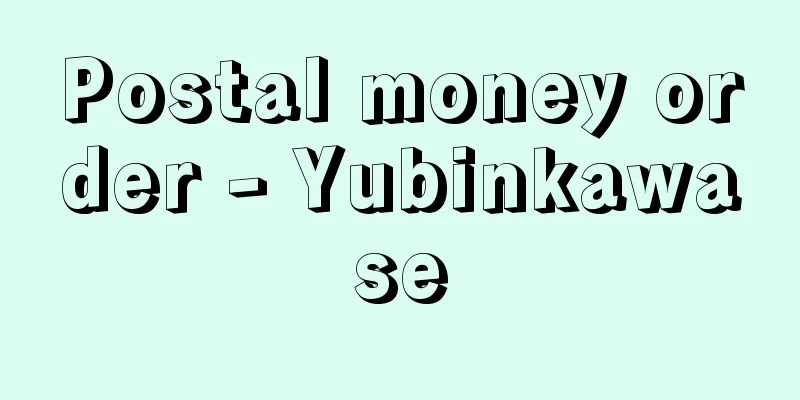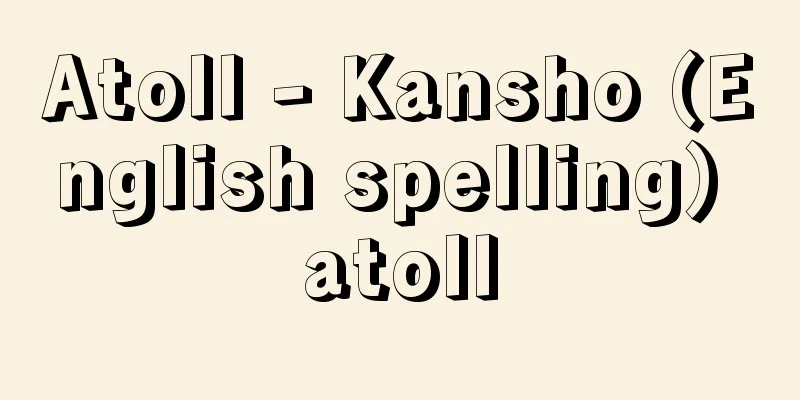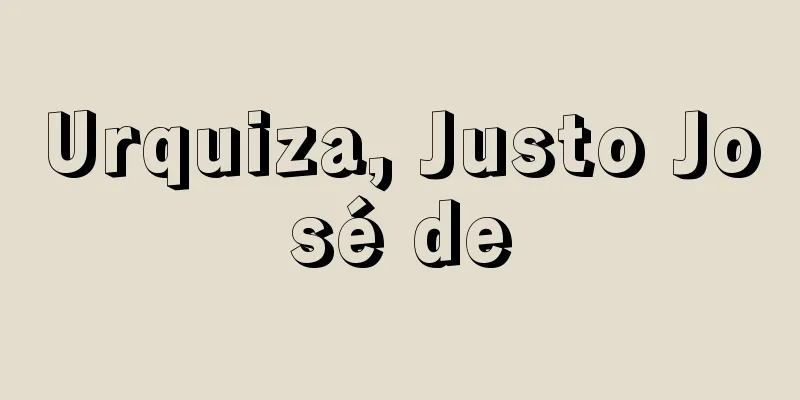Postal money order - Yubinkawase

|
The postal service provides a simple and reliable means of money transfer. The postal money order system was first established in France in 1817. In Japan, domestic postal money orders began to be handled at 110 post offices on January 2, 1875 (Meiji 8), five months before the establishment of postal savings. It emerged on the basis of the nationwide implementation of postal services in 1872 and the establishment of the system. As economic activity expanded geographically and long-distance remittances became necessary, the postal money order system was established to ensure safe and reliable remittances and facilitate economic activities, but it soon came to be used widely, not only for commercial transactions but also for things like sending school fees. Postal money orders are sent by delivering a money order certificate instead of cash. As Japan's economic activity developed and people began to live abroad, remittances to other countries became necessary, and international postal money orders were also handled in addition to domestic postal money orders. Domestic postal money orders are broadly divided into three types: ordinary money orders, telegraphic money orders, and fixed-amount small money orders. (1) Ordinary money orders In ordinary money orders, a regular money order certificate equivalent to the amount to be sent is prepared at a post office, and the certificate is mailed to the recipient, who then exchanges the certificate for cash. (2) Telegraphic transfers When making an urgent remittance, post offices notify each other via telegraph (online) and there are three types of telegraphic transfer: certificate payment, in which a telegraphic transfer certificate is delivered to the recipient, home payment, in which cash is delivered to the recipient, and over-the-counter payment, in which the recipient visits the post office to receive the money. (3) Fixed-amount small money orders: These are handled in much the same way as ordinary money orders, but remittances are made using a money order certificate with the amount printed on it. A request is made verbally at the counter, the amount to be remitted and the fee are paid, and a fixed-amount small money order certificate is received. This certificate can then be mailed, and the recipient can exchange it for cash at a post office. Fixed-amount small money orders come in 16 denominations: 100 yen, 200 yen, 300 yen, 400 yen, 500 yen, 600 yen, 700 yen, 800 yen, 900 yen, 1000 yen, 2000 yen, 3000 yen, 4000 yen, 5000 yen, 8000 yen, and 10,000 yen. Remittances can also be made in combinations of two or more sheets, depending on the amount to be remitted. A distinctive feature of postal money orders is that they are sent using a postal money order certificate, which is proof of cash delivery. There are three types of certificates: ordinary money orders, telegraphic money orders, and fixed-amount small money orders. There is no limit on the amount of remittance, but the amount of one ordinary money order or electronic money order is 1 million yen or less. However, when processed online, the amount is 5 million yen or less. Fixed-amount small money orders are used for small remittances, with a maximum of 10,000 yen as mentioned above, and can be used in combination with 16 types of certificates, and the fees are low. These certificates are valid for six months from the date of issue. In 1981, with the development of online services, efforts were made to speed up telegraphic transfers and over-the-counter payment services were also established. On June 15, 1987, Money Retax, a combination of telegraphic transfers and electronic mail (Retax), was also started. [Masayoshi Kobayashi] [Reference item] | |Source: Shogakukan Encyclopedia Nipponica About Encyclopedia Nipponica Information | Legend |
|
簡単で確実に送金できる手段を提供する郵政事業。郵便為替制度は、フランスにおいて1817年に初めて創設された。日本では、1875年(明治8)1月2日から、110局で内国郵便為替の取扱いが開始されたが、これは郵便貯金の創業に先だつこと5か月であった。1872年に郵便が全国実施され、その制度が確立されたことを基盤として登場したものである。経済活動が地理的に拡大し、遠距離間の送金も必要になってきたため、それを安全確実に行い、経済活動を円滑に行う目的で設けられたが、やがて商取引ばかりでなく、学資の送金なども含め、幅広く利用されるようになった。郵便為替の送金は、現金にかえて為替証書の送達によって行われる。日本の経済活動が発展し、また海外での居住が始まるようになるとともに、海外への送金も必要となり、内国郵便為替と並び、国際郵便為替の取扱いも行われている。 内国郵便為替は、普通為替、電信為替、定額小為替の3種に大別される。 (1)普通為替 普通為替は、郵便局で送金額に見合う普通為替証書を作成し、その証書を受取人に郵送し、受取人がその証書と引き替えに現金を受け取るものである。 (2)電信為替 電信為替は、緊急の送金に際し、郵便局相互の通知を電信(オンライン)によって行い、受取人に電信為替証書を送達する証書払いと、受取人に現金を届ける居宅払い、受取人の来局を待って為替金を交付する窓口払いがある。 (3)定額小為替 普通為替とほぼ同じ取扱いであるが、あらかじめ為替金額が印刷されている為替証書によって送金を行うものである。窓口で口頭で請求し、送金する金額と料金を支払い、定額小為替証書を受け取る。この証書を郵送すると、受取人は郵便局でその証書と引き替えに現金を受け取ることができる。定額小為替証書は、100円、200円、300円、400円、500円、600円、700円、800円、900円、1000円、2000円、3000円、4000円、5000円、8000円、1万円の16種があり、送金する金額に応じ、2枚以上の組合せでも送金できる。 郵便為替の送金の特徴は、現金受渡の証明書類である郵便為替証書によって行われることである。その証書には、普通為替証書、電信為替証書、定額小為替証書の3種類がある。送金の金額制限はないが、普通為替証書、電子為替証書1枚の金額は100万円以下となっている。ただし、オンラインによって処理する場合は、500万円以下である。定額小為替は小額の送金に利用するもので、前記のとおり最高1万円で、16種の券を組み合せて利用し、料金も低廉である。これらの証書の有効期限は、証書発行の日から6か月である。 1981年(昭和56)には、オンラインの発展に伴い、電信為替のスピード化が図られると同時に、窓口払いの取扱いが開設され、87年6月15日からは電信為替と電子郵便(レタックス)を組み合せたマネーレタックスの取扱いも開始されている。 [小林正義] [参照項目] | |出典 小学館 日本大百科全書(ニッポニカ)日本大百科全書(ニッポニカ)について 情報 | 凡例 |
<<: Postage stamp - Yubinkitte (English spelling)
>>: Postal service - Yubin (English spelling) post English
Recommend
Karatsu [city] - Karatsu
A city facing Karatsu Bay in northwestern Saga Pre...
Ushikamoshika - Ushikamoshika
→Eland Source : Heibonsha Encyclopedia About MyPed...
Indivisible claims and indivisible debts -
For example, a credit relationship between multipl...
Young Women's Christian Association
…The official name is the Young Women's Chris...
Aleutian low pressure system
A type of low pressure system in the subpolar low ...
Heliport - Heliport (English spelling)
A heliport is an airport designated by law that i...
Wirklichkeit
…However, since he also assumes a “pure form” or ...
Tachibana family Tachibana no Suke
A musician at a vaudeville theater and head of th...
Shigenori Togo
Diplomat. Born in Kagoshima Prefecture on Decembe...
Narrow Haori - Narrow Haori
…Haori was treated as casual attire because it wa...
Kaizenji Temple Jingzang Zenjitou (English: Hui-shan-si jing-zang-chan-shi-ta)
The tomb tower of Huaishan Temple, located under t...
Retention -
A prefecture-level city in central Hebei Province...
Tsuneo Imura
...The double bind theory is a hypothesis that be...
Monpe
A type of mountain hakama. Also called "monp...
Kopisch, A.
…He is cheerful and mischievous, but does not cau...









